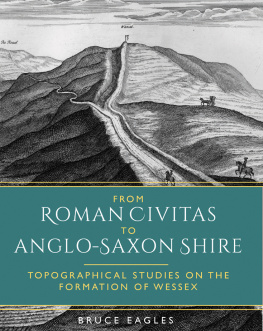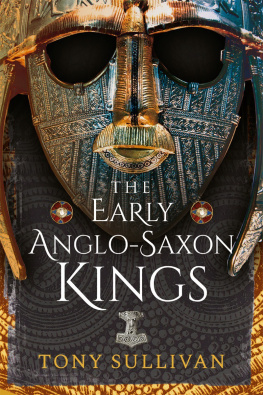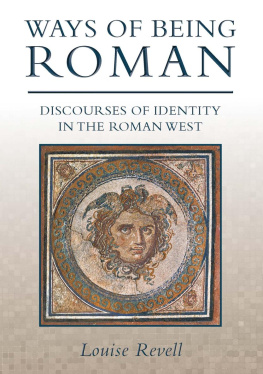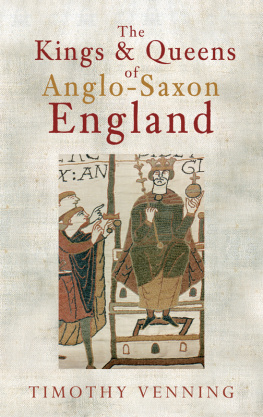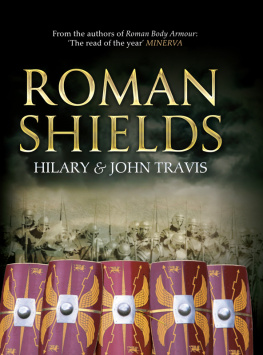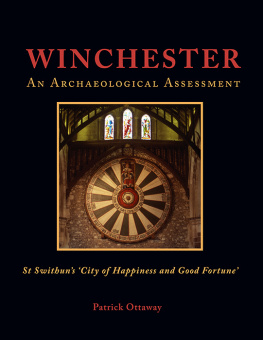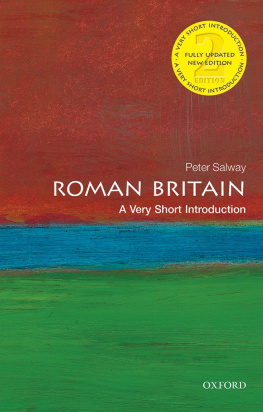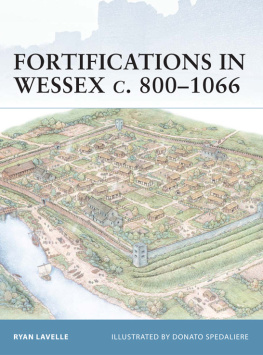
Oxford & Philadelphia
Published in the United Kingdom in 2018 by
OXBOW BOOKS
The Old Music Hall, 106108 Cowley Road, Oxford, OX4 1JE
and in the United States by
OXBOW BOOKS
1950 Lawrence Road, Havertown, PA 19083
Oxbow Books and the individual authors 2018
Paperback Edition: ISBN 978-1-78570-984-5
Digital Edition: ISBN 978-1-78570-985-2 (epub)
eISBN: 978-1-78570-985-2
Mobi ISBN: 978-1-78570-986-9
A CIP record for this book is available from the British Library
Library of Congress Control Number: 2018943145
All rights reserved. No part of this book may be reproduced or transmitted in any form or by any means, electronic or mechanical including photocopying, recording or by any information storage and retrieval system, without permission from the publisher in writing.
Typeset in India by Versatile PreMedia Services. www.versatilepremedia.com
For a complete list of Oxbow titles, please contact:
UNITED KINGDOM
Oxbow Books
Telephone (01865) 241249
Email:
www.oxbowbooks.com
UNITED STATES OF AMERICA
Oxbow Books
Telephone (800) 791-9354, Fax (610) 853-9146
Email:
www.casemateacademic.com/oxbow
Oxbow Books is part of the Casemate Group
Front cover: Prospect of the Roman road and East Wansdyke just above Calston, May 20, 1724. [W. Stukeley, London, 1743, Abury, a Temple of the British Druids, with Some Others, Described , TAB. X, facing p. 18]
List of Figures
Figure 1 The Wessex region
Figure 2 A relief map of Wessex
Figure 3 Ancient, Brittonic and Old English and other place-names which relate to the presence of the Britons in Wessex
Figure 4 The boundaries of the Roman civitates
Figure 5 Fifth-century sites in Wessex
Figure 6 British and Anglo-Saxon sites in Wessex in the fifth century as definable through material culture
Figure 7 Fifth-century sites in and around Winchester and on the Isle of Wight
Figure 8 British and Anglo-Saxon sites in and around Winchester and on the Isle of Wight in the fifth century as definable through material culture
Figure 9 Hod Hill hill-fort and its environs
Figure 10 The south-western limit of Anglo-Saxon material culture AD 500570
Figure 11 The south-western limit of Anglo-Saxon material culture AD 570700
Figure 12 Bridle-fitting from Breamore, Hampshire
Figure 13 Sites of the post-Roman and early Anglo-Saxon periods in and near the southern part of the valley of the Salisbury Avon
Figure 14 Plan of the course of Mid- to East Wansdyke and the area of Shepherds Shore to Milk Hill
Figure 15 Wansdyke near Shepherds Shore looking west
Figure 16 Pitt Rivers sections of Wansdyke
Figure 17 Plan of Wansdyke on Tan Hill
Figure 18 Ancient and Brittonic place-names and Old English place-names which refer to the Britons in Wiltshire, set against the archaeological data
Figure 19 The Avebury area
Figure 20 Saxon burials at East Kennett long barrow
Figure 21 The province of the Jutes
Figure 22 Sites of the fifth century in Dorset and Somerset
Figure 23 Dorset and Somerset in the sixth century
Figure 24 Dorset and Somerset in the seventh century
Figure 25 The spread of Anglo-Saxon material culture in Dorset in the sixth and seventh centuries
Figure 26 The location of Augustines Oak
Figure 27 The possible extent of the royal estate at Bedwyn in AD 778
Figure 28 Small shires and regiones in Hampshire
Figure 29 Small shires in Hampshire: scr names, significant places, physical relief and surface water
Figure 30 Small shires in Hampshire: Roman roads and main Roman centres
Figure 31 Small shires in Hampshire and the Domesday hundreds
List of Plates
Plate 1 Bokerley Dyke, where it traverses Martin and Bokerley Downs
Plate 2 Upper Holt, Teffont, Wiltshire, site of the Romano-British temple
Plate 3 Poundbury hill-fort, Dorset, from the north-west
Plate 4 Hod Hill hill-fort, Dorset, viewed from the south
Plate 5 Badbury Rings hill-fort, Dorset, seen from the north-west
Plate 6 South Cadbury hill-fort, Somerset, from the south-east
Plate 7 The excavation of the Anglo-Saxon cemetery at Harnham
Plate 8 The excavation of the Anglo-Saxon cemetery at Harnham
Plate 9 Oldbury Castle hill-fort, Wiltshire, viewed from the north
Plate 10 Maiden Castle hill-fort, from the north-west
Plate 11 Spetisbury Rings hill-fort, Dorset, from the north-east
List of Tables
Table 1 The distribution of brooch types in Berkshire, Dorset, Hampshire, Somerset and Wiltshire
Table 2 Wansdyke: key Romano-British items recorded from Browns Barn
Table 3 The hundred hides of Chilcomb
Acknowledgements
The studies presented here have been made possible only through the stimulating advice and encouragement of very many friends and colleagues over a large number of years. My understanding of the historic landscape has been developed through a career in the Royal Commission on Historical Monuments. This began as a student in their York office, where I benefited greatly from the inspirational encouragement of the late Herman Ramm. My subsequent move to Salisbury, where I still live, more than 50 years later, has allowed me not only to gain familiarity with the Wessex countryside, but also to enjoy its great diversity and enviable beauty. I have learned greatly from all my colleagues here and in particular from the late Collin Bowen, whose analysis of the ancient landscape was without equal.
The paper on the bridle-fitting from Breamore (Paper 4) is jointly authored with Barry Ager and that on Wansdyke (Paper 5) with Dr Michael Allen. The one on the small shires (Paper 12) would not have been possible without the significant input of Dr Rosamond Faith. To all of them I extend my thanks for their agreement to include these papers in this volume. The help and advice that I have so readily been given by others for specific Studies are acknowledged with each one of them. I have benefited greatly over many years from the inspirational encouragement of the late Professor James Campbell, who also read several of the papers in draft. The late Dr Paul Robinson gave generously of his time to keep me abreast of new finds in Wiltshire; and I am grateful, too, for the help I have also received from David Dawson, Lisa Brown and Bill Perry and their colleagues at the Wiltshire Museum, Devizes. Barry Ager and Susan Youngs, both formerly at the British Museum, have willingly shared their formidable knowledge of, respectively, early Anglo-Saxon and Celtic artefacts and have also read and commented upon a number of the papers. My debt to Rosamond Faith for sharing her extensive knowledge of Anglo-Saxon farming practices and their impact upon the countryside is evident in many places in this book. Professors Barbara Yorke and Andrew Reynolds, whose comprehension of the history and archaeology of Anglo-Saxon Wessex is so far-reaching, have been a constant source of stimulation and advice, and Barbara Yorke has also provided valuable comment on a number of the individual studies. Dr Charlotte Behr kindly commented upon Paper 8 in draft, as did Dr Paul Barnwell and Dr Sam Moorhead upon Paper 2. David Algar and Peter Saunders are my coauthors of several articles cited in the bibliography, and of others published elsewhere, and it has been a great pleasure to work closely with them over many years and to benefit from their wide knowledge of the archaeology of Wiltshire.

